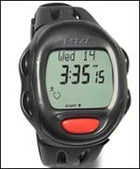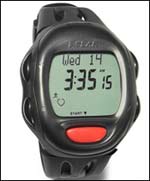Interesting question. The difference between GPS-based units such as the Garmin Forerunner 301 ($325; www.garmin.com) and those such as the Nike Triax CV10 ($280; www.nike.com) is fairly basic. As you note, the Forerunner is simply a compact GPS unitone that updates every second for constant speed/distance information. Plus it has a heart-rate monitor for training purposes, and a USB link so you can profile your workouts on a PC.
 Polar S625X
Polar S625X
The Nike and Polar units use what is called inertial technology.” This means placing a motion sensor on your foot to measure acceleration and other factors. The data is then converted to complex computer algorithms to determine your speed, distance traveled, and so on. The advantage is less weight and better battery life compared to GPS units (plus no problem with losing satellites among buildings or in dense forest). The downside is slightly lower accuracybut not much, and certainly not enough to cause you any problems (Polar claims 99 percent accuracy once the unit is fully calibrated). And, as you note, the Polar S625X ($350; www.polarusa.com) can be adapted for bicycle use. Additionally, an extra $40 gets you an infrared PC adapter to let you track your training on a Windows platform.
The only downside to the inertial units is their lack of directional orientation, but I imagine you know your running/cycling routes pretty well. They also lack an altimeter feature, and I dont know how committed you are to that. Whats more important than how far up you run or bike, I think, is knowing your heart rate and exertion.
So, Id go with the Polar or Nike units. Theyre more compact and lighter than GPS units, and are serious training tools (so are the GPS units, but in a different form).
For more expert reviews of top training devices, including the Garmin Forerunner 301 and Polar S625X, check out ���ϳԹ��� Onlines all-new .


